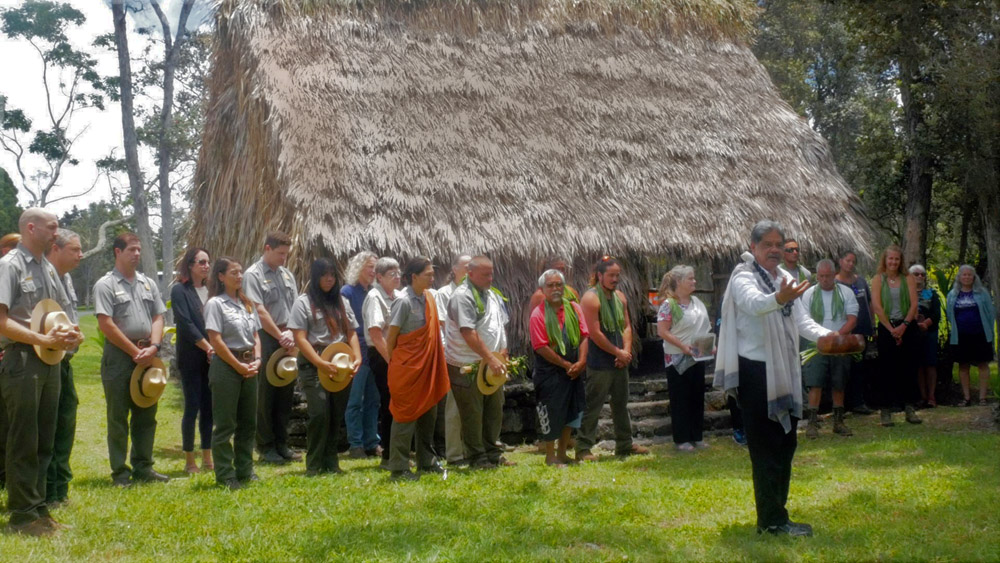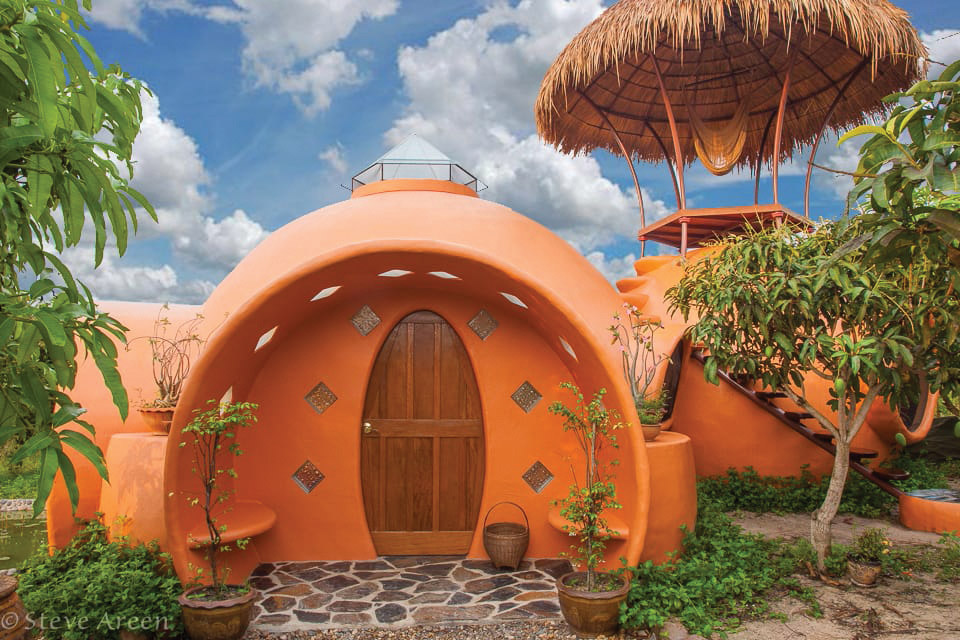
Aircrete: A Versatile DIY Building Material
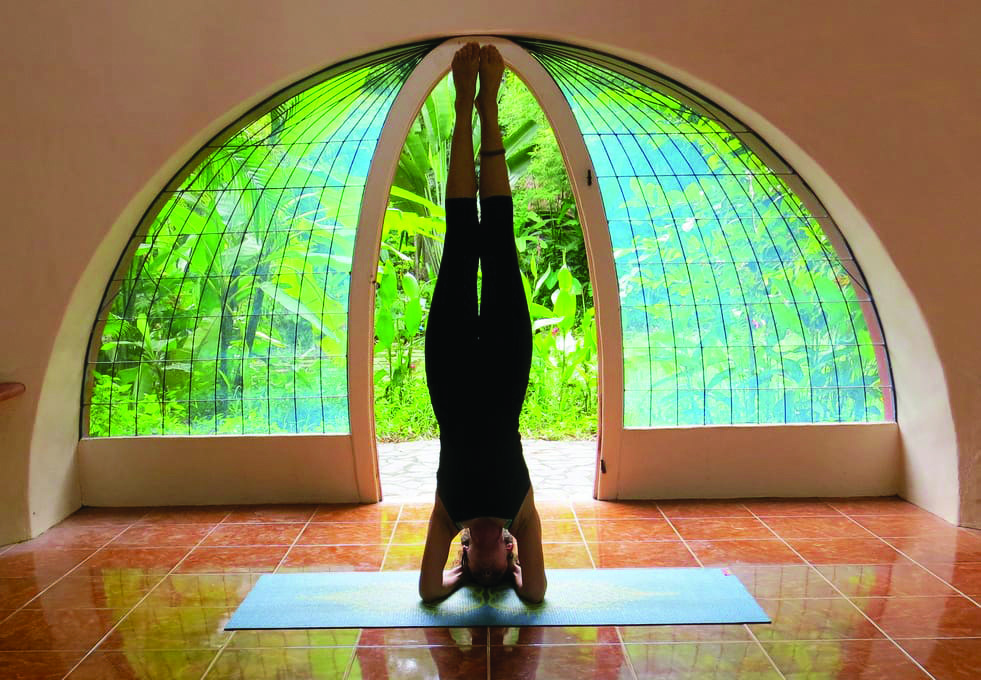
By Mālielani Larish
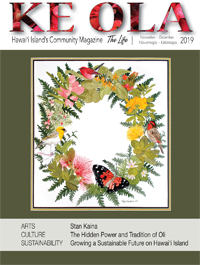
Adopting a yoga tree-pose, Stefanie Fisher effortlessly holds an aircrete block skyward. Surrounded by the model aircrete home that she is helping to build, the sunlight streaming in through the dome’s atrium illuminates her smile.
“Here, try it,” she says, handing the block to me. The block, it turns out, is no heavier than a piece of driftwood.
It is day eight of a 10-day workshop offered by Domegaia, a company that equips people with the tools, trainings, and designs to build aircrete structures that have earned worldwide recognition for their intrinsic benefits. Located in Kalapana, Domegaia’s off-grid training center hosts workshops several times each year, which attract participants from across the state and around the world.
Smiles are abundant at this July workshop, and for good reason. The workshop participants will return home with the ability to construct attractive, affordable, eco-friendly living spaces that can withstand the test of time.
A Long-Sought Treasure
When Domegaia founder Hajjar Gibran first discovered aircrete in 2011, he felt like he had unearthed a long-sought treasure. Inexpensive to produce, aircrete is impervious to pests, fire, and water. The innate strength of the spherical shape protects the edifice against earthquakes, hurricanes, and other natural disasters. The world’s largest unreinforced concrete dome, the Pantheon in Rome, has withstood 2000 years of trials.

After earning his engineering degree from South Dakota State University, Hajjar garnered awards in the building industry for his passive solar homes. However, he felt called to develop a method of building that would allow old-growth forests to remain intact.
In addition, Hajjar deeply resonated with the words of his great-uncle, Kahlil Gibran, whose spiritual classic The Prophet entreats the reader to revere the earth.
While developing a retreat center in Thailand, Hajjar built cinderblock domes and a Styrofoam dome. He also experimented with adobe, cob, and hemp as potential building materials. Still dissatisfied, he enrolled in a research project at “YouTube University” and stumbled upon what the construction industry calls “cellular” or “foam” concrete. He instantly realized how the material, which is essentially concrete infused with tiny air bubbles, could be made available to the homebuilder. Up to that point, the exorbitant cost of the equipment necessary to produce aircrete prohibited most people from utilizing it.
Hajjar envisioned: Mix cement, water, and a foam lather, allow it to harden overnight, and voilà! You have aircrete. Akin to making shaving cream, simply produce the foam by agitating good-quality dish soap with compressed air!
Hajjar’s experiments with dome building attracted the attention of the do-it-yourself building community when he helped his brother-in-law build his dream “hobbit house” on a Thai mango farm. Completed in six weeks, Steve Areen’s 500 square foot abode, made out of clay bricks and cinder blocks, cost only $9000. Videos and articles about “Steve’s dome home” went viral. Hajjar developed aircrete soon after, and the term ‘aircrete,’ which Hajjar coined, became a buzzword among builders who seek to create handcrafted dwellings.
Without expecting it, Hajjar received an avalanche of correspondence from people wanting to learn how to build with aircrete. He created Domegaia to answer the demand, and soon found himself organizing the first workshop in Mexico at the request of a friend.

Meeting the Demand
In February 2017, Domegaia held its inaugural dome building workshop in San Miguel de Allende, Mexico. 35 people from 14 different countries joined together to build a dome home for a local Waldorf school, with Domegaia covering the associated costs of the building. Since then, Domegaia staff has taught workshops in the Philippines, Costa Rica, across the continental US, and at several other locations in Hawai‘i.
“When we build together, it’s fun and more practical,” Hajjar says. “We so much need to reconnect with each other and create community.” As an increasing number of people choose to live in sustainable, holistic communities, Hajjar hopes that aircrete domes will play a role in supporting this shift.
Describing the deep satisfaction that he derives from the workshop experiences, Hajjar says, “People come with so much enthusiasm, they feel so grateful, and they feel like what they are learning is so valuable.”
When the opportunity develops, Domegaia endeavors to contribute to humanitarian efforts with the workshop process. The company has already built domes for an orphanage in Mexico and for an academy founded by doctors who worked in Afghanistan. On Hawai‘i Island, Steve hopes to help build a dome for a natural birthing center near Akaka Falls that will offer free and low-cost services to expectant mothers.
Lightweight, yet Big on Benefits
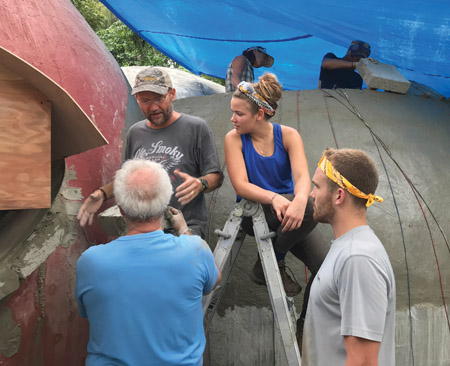
Aircrete hardens overnight to the density of wood and can be carved, cut, drilled, and shaped with woodworking tools. It welcomes nails and screws and can be molded or formed into virtually any shape.
“It’s really forgiving and it’s so easy to work with,” says Stefanie, a Realtor from Portland, Oregon who plans to build aircrete domes when she returns home.
Aircrete’s versatility makes it an ideal medium for the visionary builder. The whimsical features of Steve’s original dome home include windows that double as couches and a spiral staircase that ascends to a rooftop hammock. Stefanie plans to build a spiral design onto the top of her dome to aid in water catchment, and participant Kris Galati envisions creating meditation domes.
From the curvature of your own cells to the opulence of the moon, nature adores spherical shapes. Just as the builders of ancient mosques, temples, and churches knew, standing in the middle of a dome with the sun’s rays pouring in creates a sacred experience, simultaneously uplifting and intimate, holding the observer in a womb of dynamic potential.
Empowering the Home Builder
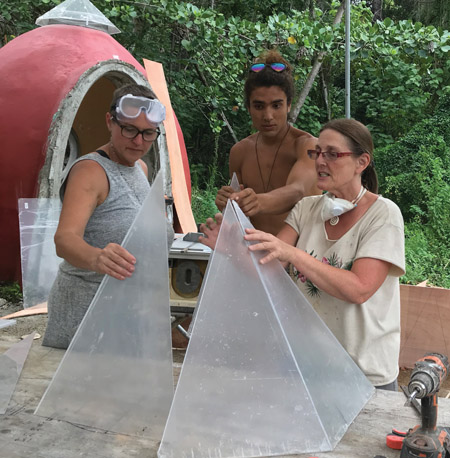
Hajjar and his son Joel developed simple tools that empower the homebuilder to produce their own aircrete at minimal cost. These tools include a compact foam generator that connects to a five-gallon bucket and a lightweight continuous mixer powered by an electric drill.
“If you can make pancake batter, you can make aircrete!” Hajjar says.
During the process, cement is expanded up to six times its original volume with air, thus saving on expenses and dramatically reducing the carbon footprint of the resulting building.
The drawback? The greater the volume of added air, the more brittle the aircrete tends to be. In response, Hajjar and his team developed a method of wrapping the entire aircrete building with a reinforcing mesh, much the same way that a fiberglass membrane encases a surfboard’s foam core.
Hajjar says that the resulting structurally reinforced aircrete “combines the compression strength of aircrete with the tensile strength of the reinforcing mesh.”
Testifying to the resilience of this design, the Domegaia model building in Kalapana endured a 6.9 earthquake on May 4, 2018, sustaining only minor cracks that were easy to repair.
Aircrete belongs to a family of lightweight cement masonry products known as aerated concrete. Extensively tested and studied, aerated concrete has been a popular building material in Europe and Asia since it was first developed by a Swedish architect in 1924. In fact, aerated concrete accounts for one-third of all concrete blocks used in the United Kingdom, and more than 225 plants worldwide manufacture it. Japan has developed a type of aerated concrete that can safely withstand earthquakes up to a level eight on the Richter scale.
The Domegaia team continually seeks to improve the aircrete building process. Most recently, Domegaia staff perfected the use of braided nylon fishing line for efficiently slicing aircrete into blocks. As cements with smaller carbon footprints become more widely available, it will become possible to make aircrete even more environmentally friendly.
Hajjar estimates that the material cost of an aircrete dome is about $1 per square foot, per one inch of wall thickness, including the foundation slab, the complete aircrete shell, and the arches. This means that a 1000 square foot dome with four-inch thick walls will cost about $4000. This does not include labor costs—aircrete usually attracts builders who provide their own labor.
A Joyful Team Effort
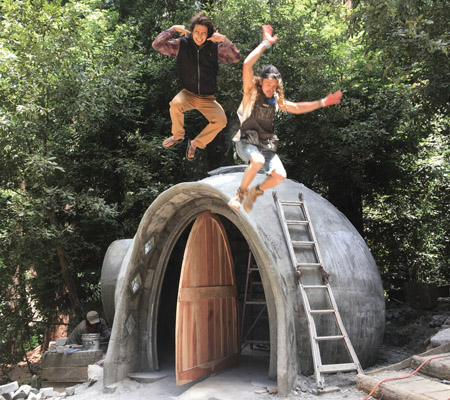
Passing around coconuts freshly harvested from the steamy Kalapana jungle, a dozen workshop participants gather together in the shade of a banyan tree to joke and laugh during a Domegaia workshop break. Like eager bees swarming in and out of a hive, they have spent the morning making progress on the model demonstration dome. Over the course of the workshop, they have learned how to produce the aircrete blocks, how to stack them using a pivoting compass arm, how to install windows and doors, how to build a multi-faceted cupola skylight, and how to create forms for archways, furniture, and countertops. Domegaia’s motto, “Art is love made visible,” has been woven into every step of the process.
Eyes sparkling beneath a fisherman’s hat, 20-year Kalapana resident Norman Clemens outwits one of the energetic workshop instructors in a game of quick reflexes. “I’m here for the camaraderie,” Norman says. A retired beekeeper, restaurant owner, and schoolteacher, Norman is impressed by the harmony and cooperation demonstrated by the workshop participants.
Domegaia’s founder, Hajjar Gibran, also impresses Norman. “He is an amazing man doing amazing things on a global scale.”
Domegaia offers a kama‘āina rate to Hawai‘i residents, and individuals who can’t commit to a full workshop can purchase one-day passes. Participants with financial need may apply for Domegaia’s scholarship program. ❖
For more information: domegaia.com
References/Resources:
greenspec.co.uk/building-design/blocks/
designforhomes.org/wp-content/uploads/2012/03/AircreteBlocks.pdf
aircrete.com/wp-content/uploads/2018/07/W.M.-van-Boggelen-History-of-Autoclaved-Aerated-Concrete.pdf
Mahalo Clark Realty—Home/Building Story Sponsor
